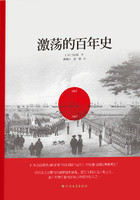During that first year the household felt no pinch; the Countess Steinbock, desperately in love with her husband cursed the War Minister. She went to see him; she told him that great works of art were not to be manufactured like cannon; and that the State--like Louis XIV., Francis I., and Leo X.--ought to be at the beck and call of genius. Poor Hortense, believing she held a Phidias in her embrace, had the sort of motherly cowardice for her Wenceslas that is in every wife who carries her love to the pitch of idolatry.
"Do not be hurried," said she to her husband, "our whole future life is bound up with that statue. Take your time and produce a masterpiece."
She would go to the studio, and then the enraptured Steinbock wasted five hours out of seven in describing the statue instead of working at it. He thus spent eighteen months in finishing the design, which to him was all-important.
When the plaster was cast and the model complete, poor Hortense, who had looked on at her husband's toil, seeing his health really suffer from the exertions which exhaust a sculptor's frame and arms and hands --Hortense thought the result admirable. Her father, who knew nothing of sculpture, and her mother, no less ignorant, lauded it as a triumph; the War Minister came with them to see it, and, overruled by them, expressed approval of the figure, standing as it did alone, in a favorable light, thrown up against a green baize background.
Alas! at the exhibition of 1841, the disapprobation of the public soon took the form of abuse and mockery in the mouths of those who were indignant with the idol too hastily set up for worship. Stidmann tried to advise his friend, but was accused of jealousy. Every article in a newspaper was to Hortense an outcry of envy. Stidmann, the best of good fellows, got articles written, in which adverse criticism was contravened, and it was pointed out that sculptors altered their works in translating the plaster into marble, and that the marble would be the test.
"In reproducing the plaster sketch in marble," wrote Claude Vignon, "a masterpiece may be ruined, or a bad design made beautiful. The plaster is the manuscript, the marble is the book."
So in two years and a half Wenceslas had produced a statue and a son.
The child was a picture of beauty; the statue was execrable.
The clock for the Prince and the price of the statue paid off the young couple's debts. Steinbock had acquired fashionable habits; he went to the play, to the opera; he talked admirably about art; and in the eyes of the world he maintained his reputation as a great artist by his powers of conversation and criticism. There are many clever men in Paris who spend their lives in talking themselves out, and are content with a sort of drawing-room celebrity. Steinbock, emulating these emasculated but charming men, grew every day more averse to hard work. As soon as he began a thing, he was conscious of all its difficulties, and the discouragement that came over him enervated his will. Inspiration, the frenzy of intellectual procreation, flew swiftly away at the sight of this effete lover.
Sculpture--like dramatic art--is at once the most difficult and the easiest of all arts. You have but to copy a model, and the task is done; but to give it a soul, to make it typical by creating a man or a woman--this is the sin of Prometheus. Such triumphs in the annals of sculpture may be counted, as we may count the few poets among men.
Michael Angelo, Michel Columb, Jean Goujon, Phidias, Praxiteles, Polycletes, Puget, Canova, Albert Durer, are the brothers of Milton, Virgil, Dante, Shakespeare, Tasso, Homer, and Moliere. And such an achievement is so stupendous that a single statue is enough to make a man immortal, as Figaro, Lovelace, and Manon Lescaut have immortalized Beaumarchais, Richardson, and the Abbe Prevost.
Superficial thinkers--and there are many in the artist world--have asserted that sculpture lives only by the nude, that it died with the Greeks, and that modern vesture makes it impossible. But, in the first place, the Ancients have left sublime statues entirely clothed--the /Polyhymnia/, the /Julia/, and others, and we have not found one-tenth of all their works; and then, let any lover of art go to Florence and see Michael Angelo's /Penseroso/, or to the Cathedral of Mainz, and behold the /Virgin/ by Albert Durer, who has created a living woman out of ebony, under her threefold drapery, with the most flowing, the softest hair that ever a waiting-maid combed through; let all the ignorant flock thither, and they will acknowledge that genius can give mind to drapery, to armor, to a robe, and fill it with a body, just as a man leaves the stamp of his individuality and habits of life on the clothes he wears.
Sculpture is the perpetual realization of the fact which once, and never again, was, in painting called Raphael!
The solution of this hard problem is to be found only in constant persevering toil; for, merely to overcome the material difficulties to such an extent, the hand must be so practised, so dexterous and obedient, that the sculptor may be free to struggle soul to soul with the elusive moral element that he has to transfigure as he embodies it. If Paganini, who uttered his soul through the strings of his violin, spent three days without practising, he lost what he called the /stops/ of his instrument, meaning the sympathy between the wooden frame, the strings, the bow, and himself; if he had lost this alliance, he would have been no more than an ordinary player.
Perpetual work is the law of art, as it is the law of life, for art is idealized creation. Hence great artists and perfect poets wait neither for commission nor for purchasers. They are constantly creating--to-day, to-morrow, always. The result is the habit of work, the unfailing apprehension of the difficulties which keep them in close intercourse with the Muse and her productive forces. Canova lived in his studio, as Voltaire lived in his study; and so must Homer and Phidias have lived.















